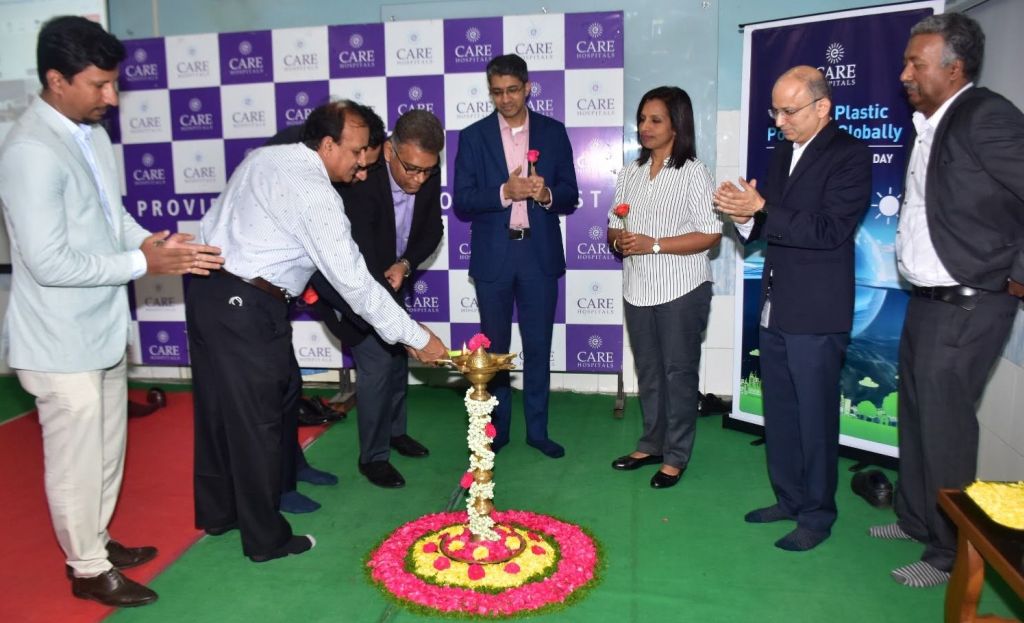Quantum Sensors: From Lab to Chip Through Semiconductor Fabs
Author: Noah El Alami, Technology Analyst at IDTechEx
Quantum sensors offer dramatically increased sensitivity compared to their classical incumbents or even enable new sensing capabilities altogether. Multiple industries are expected to benefit from quantum sensing innovations, including atomic clocks, quantum magnetometers, quantum gyroscopes, and more.
However, bringing quantum sensors from a lab prototype to a commercial product requires optimization in their size, weight, power, and cost (or SWaP-C for short). As explored in IDTechEx's recent report, “Quantum Sensors Market 2025-2045: Technology, Trends, Players, Forecasts“, the most successful approach to achieving this is by manufacturing as much of the sensor as possible in highly scalable semiconductor manufacturing processes. By enabling the more efficient production of components essential for quantum sensing now, those semiconductor fabs integrated in the value chain will reap the most rewards.

Opportunities for semiconductor fabrication in manufacturing specialized components in a typical atomic clock or other quantum sensor based on atomic interferometry. Source: IDTechEx
Vapor cells are at the heart of many quantum sensors
Glass vapor cells enable lasers to interact with a contained sample of atomic gas. They are at the heart of quantum sensors using atomic interferometry. These include early-stage quantum RF sensors, accelerometers, and gyroscopes, but also the more developed chip-scale atomic clocks and OPMs (optically pumped magnetometers). The scalable manufacture of vapor cells is vital to the mass production of these quantum sensors.
Glass blowing is the conventional technique for manufacturing vapor cells, and while glassblowing can be used to microfabricate spherical vapor cells, their curved surfaces scatter incoming light and there is a limit to how small they can be fabricated.
Instead, the production of vapor cells in wafer-scale semiconductor manufacturing processes has been demonstrated and has the potential to mass manufacture highly regular vapor cells for quantum sensors. This process involves etching each cell cavity into a wafer of glass, which is then filled with an atomic species before bonding with another glass surface to achieve a hermetic seal. This field is rich in innovations, including the use of alternative glasses, various etching and bonding techniques, and protective or property-enhancing thin-film coatings.
Advances in laser technology are crucial for quantum sensors
One of the most commonly used components in quantum sensors are lasers. Coherent, narrowband light is vital for manipulating atomic states and nitrogen-vacancy centers in diamond. However, maintaining stability and power at the required wavelengths while reducing the size and cost of lasers is notoriously challenging. Innovations in laser technology impact industries beyond quantum tech, including telecoms, medical devices, LiDAR, and many more.
Vertical cavity surface emitting lasers (VCSELs) are a type of semiconductor laser diode that can be mass-fabricated on the wafer-scale. Unlike conventional edge-emitting semiconductor lasers, VCSELs emit a beam perpendicular to their top surface, directly out of the chip. In addition to advantages in manufacturing and testing, this enables chip scale quantum sensors by allowing the other components to be stacked directly on top of the VCSEL.
Although they were invented in the late 1970s, the introduction of VCSELs in smartphones in the late 2010s and their growing use in automotive infrared cameras and interconnects for data centers means the demand for VCSELs has grown significantly in recent years. Their growing ubiquity in other applications directly benefits quantum imaging technologies such as gas LiDAR, which also require compact sources of focused SWIR (900-1550nm) light.
However, VCSELs for atomic quantum sensors have slightly different requirements. The wavelengths needed to control the relevant atomic transitions typically lie in the 700-900nm range, and a narrow linewidth with high stability to environmental changes is often needed.
Despite this, microwave chip-scale atomic clocks have already seen success in mass production by using VCSELs and microfabricated vapor cells. As the quantum sensing market matures, chip-scale laser diodes such as VCSELs will be essential to enabling chip-scale quantum gyroscopes, accelerometers, and next-generation atomic clocks.
Established companies such as Trumpf, as well as spinouts like III-V Epi and ICS (Integrated Compound Semiconductors), have now developed VCSELs specifically for the quantum sensing market. Combining the capabilities of major semiconductor fabs with innovations in laser technology will be key for commercializing quantum sensors.
The chicken and egg problem
Specialized components for quantum sensors, and more broadly quantum technologies, face a recurring problem: high production costs limit the addressable market of the final products, which in turn limits the scaling up of manufacturing to bring down costs.
Quantum technologies recently spun out of research often rely on small-batch manufacture of specialized components, either done in-house or at a local research facility. Using cheaper, existing components is often not an option due to the level of precision needed in controlling highly sensitive quantum systems.
The largest hurdle for the wafer-scale manufacture of vapor cells is in achieving the scale required to justify their mass production. The manufacturing costs for small batches of this complex, multi-stage process is presently high, and vapor cells have relatively niche applications beyond quantum sensing.
To address this, initiatives bringing together industry and academia are being launched to support the development of semiconductor manufacturing for emerging quantum technologies. Centralizing production facilities into “quantum foundries” offers a more efficient solution, and fostering dialogue within the quantum industry can reduce the amount of resources spent on in-house development of components for a faster route to scalable production.
Market outlook and the future ahead
Chip-scale miniaturization of atomic clocks has already been achieved through innovations in the manufacture of vapor cells and VCSELs. For example, Microchip has commercialized chip-scale microwave (cesium and rubidium) atomic clocks since 2011 using these components, providing a blueprint for other quantum sensors to transition to mass production.
Looking ahead, semiconductor foundries have an opportunity to become key players in the value chain for quantum sensors. Investing now in reducing the manufacturing costs for quantum sensors could unlock larger accessible markets in the near future. These potential markets stem from a tangible demand for better sensing solutions, including in timekeeping, magnetic field (remote current) sensing, and inertial sensing, which can all be achieved through quantum sensors.
The IDTechEx report, “Quantum Sensors Market 2025-2045: Technology, Trends, Players, Forecasts”, delves into the details of components for quantum sensors in a dedicated chapter, as well as providing context and forecasts across 20 different types of quantum sensors, based on research including SWOT analyses, technology roadmaps, and over 40 company profiles.
To find out more about this IDTechEx report, including downloadable sample pages, please visit www.IDTechEx.com/QuantumSensors.
For the full portfolio of quantum technologies market research available from IDTechEx, please see www.IDTechEx.com/Research/Quantum.




